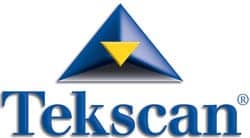Researchers have reportedly pinpointed a muscle-building mechanism that may play a key role in addressing sarcopenia. The findings appear online in the September 2014 issue of The FASEB Journal, according to a news release issued by Tufts University.
During their research, lead author Donato A. Rivas, PhD, scientist in the Nutrition, Exercise Physiology and Sarcopenia Laboratory at the USDA HNRCA at Tufts University, and colleagues observed that the level of microRNAs was lower in the muscle tissue of older men, when compared to younger men.
The release notes that researchers recruited 16 healthy, sedentary men to perform a single session of resistance exercise in order to trigger muscle growth. The researchers then examined tissue samples taken before and 6 hours after the exercise. Half of the men were in their twenties and the other half in their seventies, the release says.
Rivas explains in the release that “One of the steps in building muscle seems to be missing in the older men, preventing them from responding to the exercise as strongly as the younger men did. It is possible that the suppression of these microRNAs is setting off a chain of events that is causing older people to be less efficient in developing muscle.”
Roger A. Fielding, PhD, director of the Nutrition, Exercise Physiology and Sarcopenia Laboratory at the USDA HNRCA at Tufts University, adds that age-related muscle loss is linked to a variety of other health problems. With a projected increase in the population of older adults, the release states, more effective sarcopenia treatment and prevention could assist in controlling healthcare costs.
“Muscle mass is closely tied to our metabolism and losing it increases the risk of developing metabolic diseases like type 2 diabetes and cardiovascular disease. We also know that a program of moderate physical activity, including resistance exercises, can strongly influence a person’s chances of maintaining their ability to walk after age 70,” Fielding adds.
The release also reports that in addition to resistance exercises, the scientists are also exploring different approaches intended to preserve and build muscle mass in older adults. Nutrient supplementation, gene therapy, and hormone replacement therapy are indicated by some studies to assist in building muscle, Fielding says.
The authors emphasize in the release that the small size of the study calls for further research in clinical models and in men and women, particularly individuals who have sarcopenia.
Source: Tufts University



